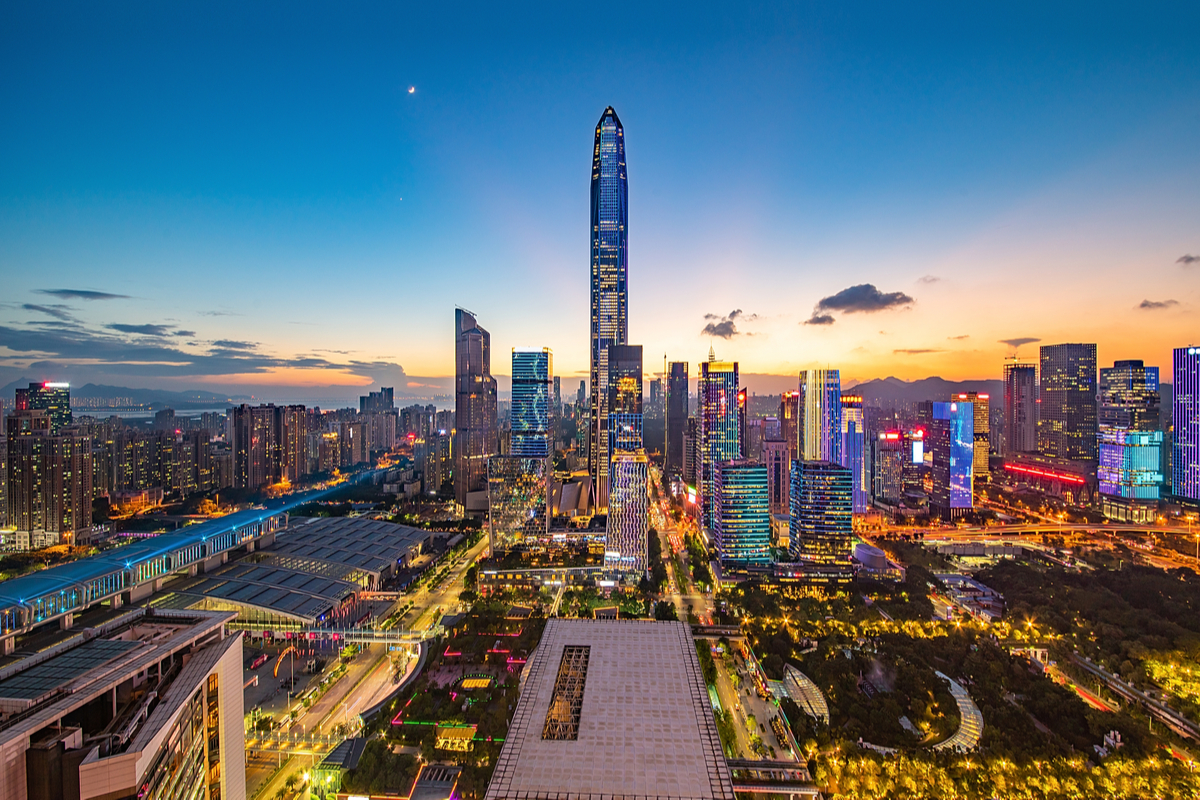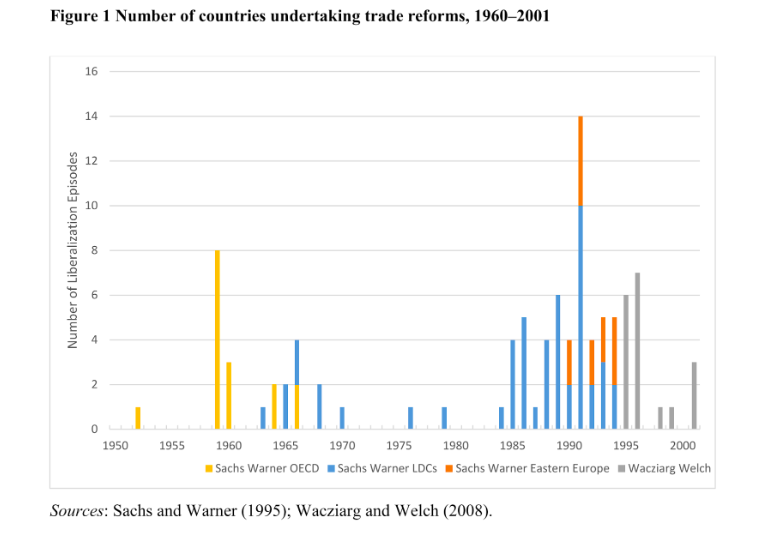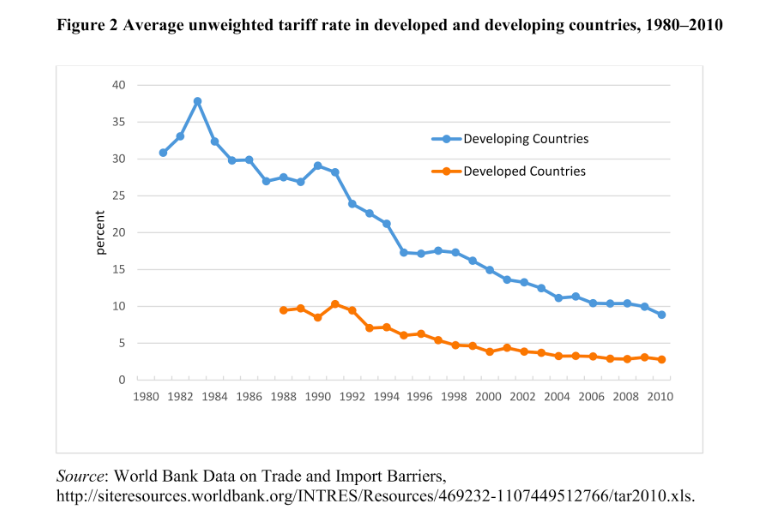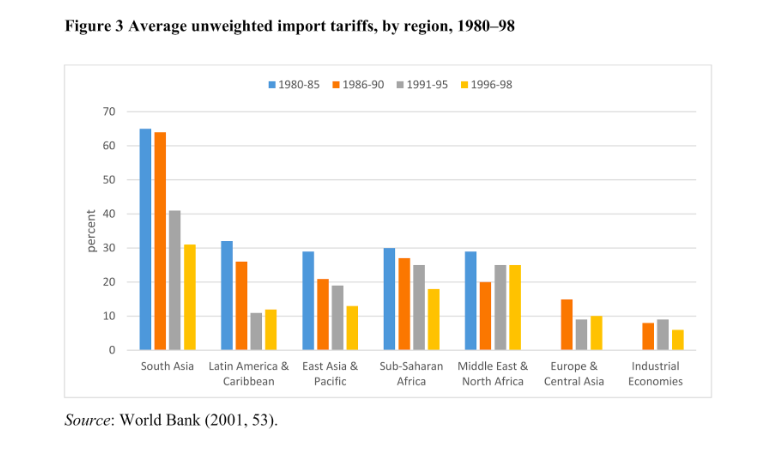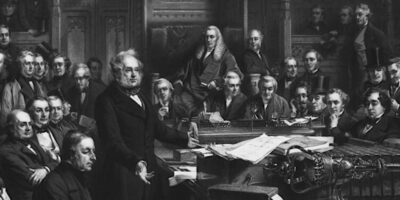Freer Trade and Economic Growth: Evidence of the Relationship
Economists agree that trade is good for economic growth, right? While our economic understanding of the benefits of trade goes back to the very origins of the field, strong empirical estimates of trade’s effect on growth have been harder to establish. Some countries that liberalized trade experienced massive growth; others floundered.
Overall, it has proven a tricky empirical question.
In an influential 1992 article published in the Journal of Economic Perspectives, Dani Rodrik argued that “in most of the countries that have undertaken radical trade reforms in the 1980s, the direct efficiency consequences of trade liberalization are still uncertain and likely to be small.” In a follow-up survey conducted by Rodrik and Francesco Rodríguez in 2000, the authors concluded that “the relationship between trade policy and economic growth remains very much an open question” and “is far from having been settled on empirical grounds.”
What have we learned in the 20 years since Rodríguez and Rodrik’s article? A new NBER working paper by Douglas Irwin summarizes recent work estimating the relationship between trade reform and economic growth.
First, Irwin shows just how much trade policy has been reformed over time. With more evidence at hand, Irwin points out that estimates from cross-country regressions often put the effect at a one to two percentage-point increase in growth from trade liberalization. Notice that this is an increase in the growth rate, not an increase in output. A one percentage-point increase is huge. Incomes growing at 3 percent double in roughly 23 years, quadruple in 46 years. Incomes growing at 4 percent double in 18 years, quadruple in 35 years. Small differences in growth rates result in huge differences in income over time.
Other studies have looked at particular industries in particular countries in more detail; the results also show a positive impact of opening to trade. As Irwin puts it, “A consistent finding is that trade reforms have a positive impact on economic growth, on average, but as one would expect the effects differ considerably across countries.”
One of the reasons that economists in 2019 have a better understanding of the effects of trade reforms is that the major trade liberalizations have had more time to take effect. “The great trade reform wave of the late 1980s and early 1990s,” Irwin writes, “provides new historical evidence on the matter. There is no one perfect method that can provide decisive evidence on this question, so researchers have tried to understand the relationship using a variety of approaches.” And that reform wave provides a lot of data points. Figure 1 below shows the number of trade reforms in any particular year over time, according to different papers’ categorizations.
Trade reforms often involved multiple policies, carried out in multiple steps, where countries went about “devaluing their currencies and unifying their exchange rates, allowing exporters to retain foreign currency earnings, reducing licensing and quantitative restrictions, and then — often last in the mix — cutting tariffs, usually on intermediate goods first and consumer goods later, sometimes much later.”
When those tariffs finally were cut, they were cut immensely. Figure 2 plots the average tariff rate for developed and developing countries. Tariff rates in developing countries drop from a high of more than 35 percent in the early 1980s to below 10 percent by 2010. Similarly, Martin and Ng (2004) calculate the weighted-average tariff in developing countries and find that it declined by similar amounts. Of interest for policy discussions about the political feasibility of lowering trade barriers, Martin and Ng find that three-quarters of the tariff reduction came from unilateral actions taken by the countries involved.
However, this liberalization over time was not consistent across the globe. As shown in figure 3, South Asian countries, such as India, Bangladesh, and Sri Lanka, saw the largest decline in tariffs, whereas Africa and the Middle East did not change their policies much.
Did these reforms actually lead to growth? It is difficult to conclude definitively. As Irwin puts it, “Standard theory suggests that reducing trade barriers should lead to efficiency gains. But why might it be expected to increase economic growth as well? … When policy reforms (trade related or otherwise) are limited and phased in, there is no reason to expect an immediate burst of growth.”
Suppose we knew that a trade reform positively affected a country’s growth rate. What would that look like, empirically? Could we verify and measure the effect? It is extremely difficult to isolate an individual factor in economic growth since economists do not run country-wide experiments. Instead, economists must compile varied evidence to come to tentative conclusions.
The first (and most common) type of evidence is cross-country regressions. Irwin cites a recent World Bank Economic Review paper by Romain Wacziarg and Karen Welch. The authors find that “trade reform had a positive, economically large, and statistically significant impact on growth and investment” of around one percentage-point.
But, on further reflection, lumping all trade reforms together and considering the effect is a bit odd. Not all tariffs are equal. And reducing some tariffs might have a bigger effect on growth than others. A final-goods tariff might not matter much, for example, while a tariff on investment may have a large impact on growth over time. If that is the case, we should expect reducing investment tariffs to have a larger impact. In a 2013 paper, Estevadeordal and Taylor find that a 25 percent reduction in tariffs on capital goods is associated with a roughly 1 percentage-point increase in economic growth, compared to non-liberalizers.
In order to move from “associated with” to “caused by,” Irwin looks at studies using synthetic controls. In a synthetic-control study, the econometrician attempts to construct a “synthetic” country against which one can judge the performance of an actual country. The synthetic control represents the best guess of what would have happened if the reforming country had not reformed. It is an attempt to create a counterfactual in order to make more-relevant comparisons. Of course, making a causal argument still requires a host of assumptions. Nevertheless, synthetic controls provide another form of evidence, and that evidence indicates that reforms improve economic growth.
The biggest change for researchers considering the effects of trade on growth over the past 20 years has been the greater availability of data. Economists now have firm-level data in developing countries that help determine what economic adjustments were made after reforms. For example, Amiti and Konings (2007) use plant-level data on imported inputs from Indonesia from 1991 to 2001. They estimate that a 10 percentage-point reduction in input tariffs led to a 12 percent productivity gain for importing firms. For output tariffs, a 10 percentage-point reduction was associated with a productivity gain of 1–6 percent. Irwin cites other papers with similar results.
While we know a lot more than we knew 20 years ago, questions remain about how much of the increase in growth can be attributed to trade reform and how much should be attributed to other market reforms made at the same time. Even if the reduction of trade barriers accounts for only a small part of the observed increase in growth, however, the cumulative gains from reform appear to be substantial. Irwin concludes by quoting Estevadeordal and Taylor: “Is there any other single policy prescription of the past twenty years that can be argued to have contributed between 15 percent and 20 percent to developing country income?” I highly doubt it.

